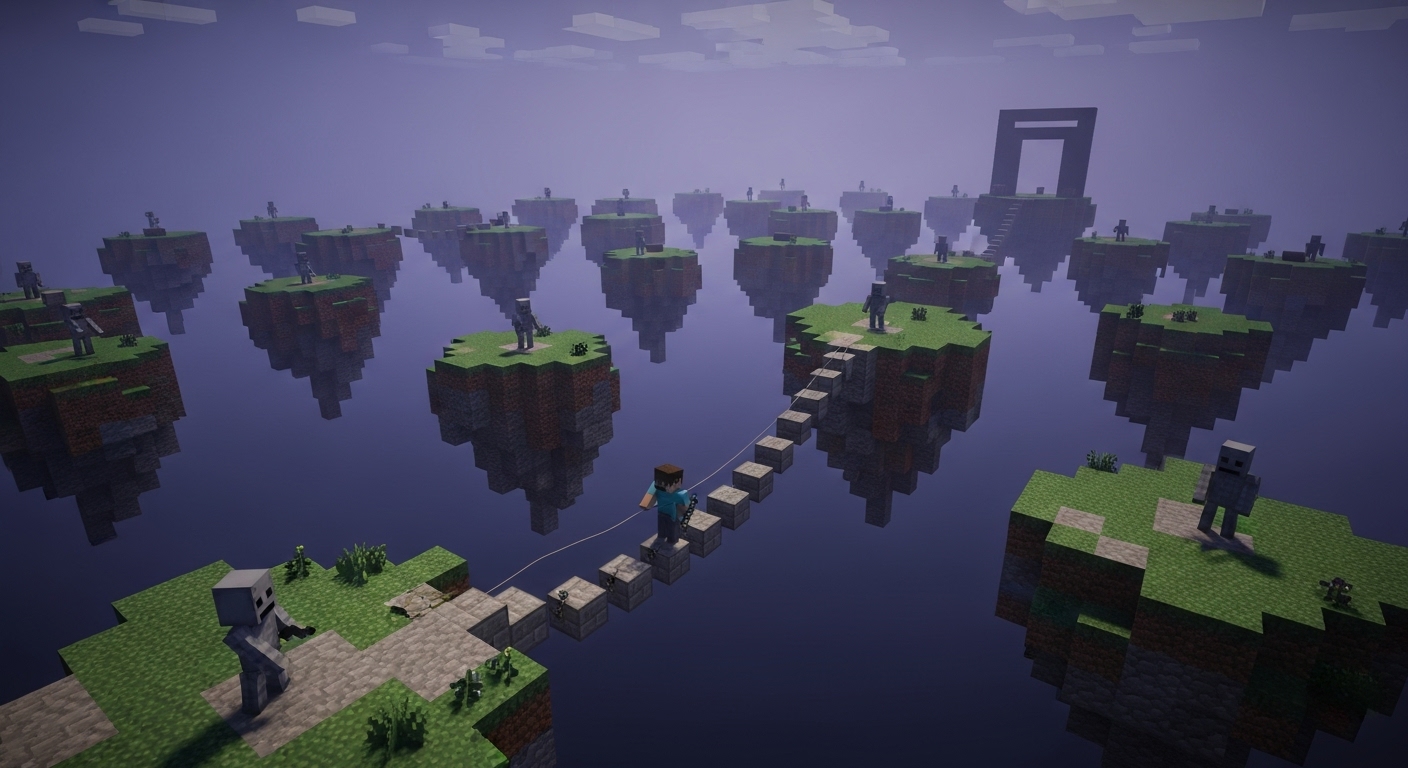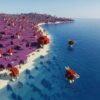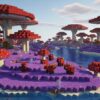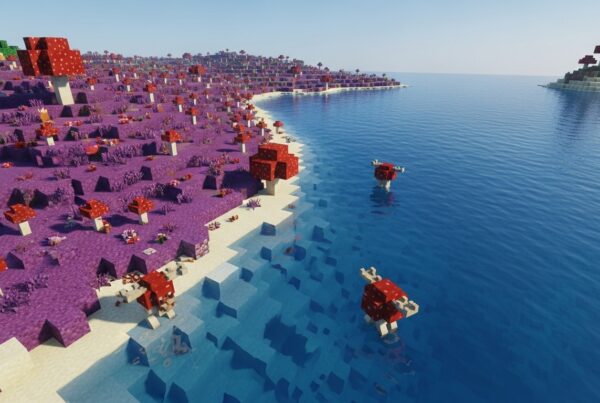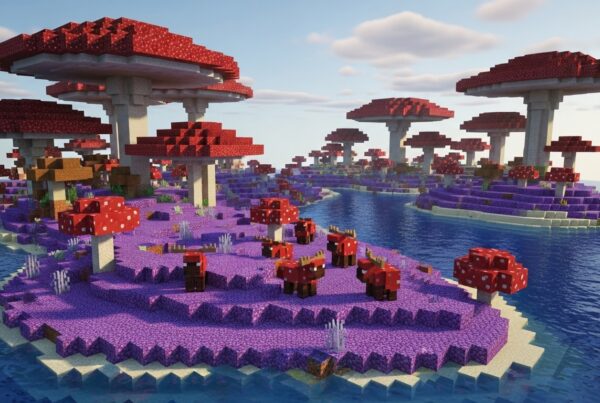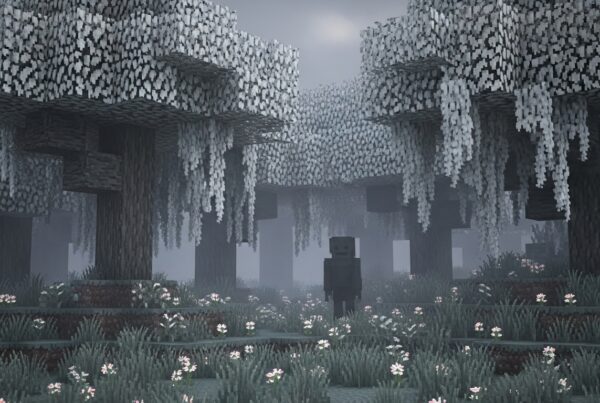The Small End Islands are one of the most deceptive biomes in Minecraft. At first glance, these tiny fragments of floating End Stone seem barren and uneventful — but they represent the gateway to the Outer End, where End Cities, Shulkers, and Elytra await. Found far beyond the central End island, this biome plays a crucial role in late-game exploration, posing extreme risks while offering essential traversal routes and strategic building opportunities.
This guide breaks down everything players need to know about the Small End Islands biome, including its terrain, dangers, edition differences, and why mastering it is key to success in the End dimension.
What Are the Small End Islands?
The Small End Islands biome is a sub-biome of the End found only in Java Edition. In this region, small clusters of floating islands appear throughout the Outer End, forming the sparse outer ring players encounter after entering an End Gateway.
Key Facts:
- Java Edition only. Bedrock Edition does not split the End into sub-biomes; it uses a single “The End” biome.
- Consists of small, disconnected islands of End Stone.
- Found approximately 1,000+ blocks away from the central End island.
- Biome acts as a transitional zone between the central island and larger biomes like End Highlands and End Midlands.
- No structures, no chorus trees, and no loot generate here.
It is not a destination — it is a pathway.
Terrain and Generation Features
The Small End Islands biome is defined by fragmented terrain, large void gaps, and minimal vertical variation. It’s one of the most dangerous areas in the End simply because there is so little land to stand on.
Biome Terrain Overview
- Islands are composed entirely of End Stone.
- Landmasses range from tiny rock formations to medium-sized flat islands.
- Void gaps between islands are often dozens of blocks wide.
- Islands commonly generate at Y-levels ~55–70.
- The biome generates in a wide ring around the central island.
- No chorus trees grow here, despite being common elsewhere in the Outer End.
Because the area has no structural or resource incentives, players are encouraged to keep moving until they reach higher-value biomes.
Mobs and Spawn Behavior
The Small End Islands have simple — but dangerous — mob behavior:
Mob Spawns
- Endermen are the only mob that spawns here.
- High Enderman frequency increases the chance of accidental aggro.
- No other hostile mobs, animals, or neutral entities appear.
With limited space to stand and high Enderman density, even a single mistake can lead to disaster.
Resources Found in Small End Islands
This biome is not known for resources, but it does provide materials crucial for certain farms or building projects.
Available Resources
- End Stone — plentiful and useful for decorative or blast-resistant builds.
- Endermen drops — Ender Pearls are invaluable for traversal in the End.
- Void space — perfect for farms requiring ultra-high spawn efficiency.
Not Found Here
- No chorus trees or chorus fruit (must be found in End Highlands).
- No natural ores or loot.
- No End Cities or Shulkers.
The biome itself is not rewarding — the areas it leads to are.
Dangers and Survival Challenges
The Small End Islands are incredibly hazardous. The terrain gives players little room for error, and the risk of falling into the void is ever-present.
Major Risks
- Void death — the biggest and most common danger.
- Enderman aggression — unavoidable if you mis-aim your crosshair.
- Unstable footing — narrow paths and ledges make combat difficult.
- Bridging hazards — one slip or misplacement can be fatal.
- No nearby safe zones — few places to retreat or regroup.
This biome is unforgiving, especially for players entering it for the first time after defeating the Ender Dragon.
Exploration and Navigation Tips
Surviving the Small End Islands requires preparation, mobility tools, and cautious planning.
Recommended Gear
- Ender Pearls (your most important tool)
- Slow Falling potions (dramatically increases survival chances)
- Blocks for bridging (cobblestone, end stone, or slabs)
- Feather Falling IV boots
- Pumpkin helmet (optional but helps avoid Enderman aggro)
- Elytra (if returning later)
Safe Navigation Strategies
- Build wide, secure bridges with edge barriers.
- Use ender pearls only when you have a clear landing zone.
- Move methodically from island to island until reaching End Midlands or End Highlands.
- Place torches, walls, or cobblestone markers to track your route.
- Use F3 to confirm biome transitions — this helps locate potential End City biomes.
Because the biome is structure-free, navigation is the only reason to linger here.
Rewards and Reasons to Explore
While the Small End Islands offer minimal direct loot, the biome is essential to progression in the End dimension.
Why This Biome Matters
- It is the mandatory pathway to End Highlands — where End Cities generate.
- It allows players to gather End Stone for building projects.
- Ideal for setting up Enderman XP farms thanks to high spawn rates.
- Provides the safest zone for building void-based mob farms.
You don’t explore Small End Islands for treasure — you explore them to reach the treasure.
Biome Comparison Table
Below is a helpful comparison of the Small End Islands and nearby End biomes:
| Biome | Island Size | Structures | Chorus Trees | Endermen | Notes |
|---|---|---|---|---|---|
| Small End Islands | Very small, scattered | None | No | Yes | Transitional zone; dangerous terrain |
| End Barrens | Low, flattened edges | None | No | Yes | Surrounds larger islands |
| End Midlands | Medium | Rare End Cities | Sometimes | Yes | Often between Small End Islands and Highlands |
| End Highlands | Large | Frequent End Cities | Yes | Yes | Best place to find Elytra & Shulkers |
This table helps players quickly understand which direction to explore if they’re hunting for End Cities.
History and Edition Differences
Java Edition
- Biome name changed from “The End – Floating Islands” to “Small End Islands” in snapshot 18w19a.
- Sub-biome system is unique to Java Edition.
Bedrock Edition
- Does not include this biome as a separate category.
- The entire Outer End is classified simply as “The End”.
Players using guides should ensure they are referencing the correct edition for accurate information.
Building and Farming Ideas
Even though the biome is small and barren, it provides advantages for specific farm types.
Popular Builds in Small End Islands
- Enderman XP Farm
High Enderman spawn rates and void backdrop increase efficiency. - Void Mob Farms
The absence of other mobs makes spawn capping extremely effective. - Minimalist Void Bases
Some players enjoy living in floating bases surrounded by endless void.
Because the biome is quiet and isolated, it’s ideal for performance-optimized farms.
Final Tips for Travelers
- Always bring Ender Pearls — they are your lifeline.
- Use Slow Falling to avoid immediate void death.
- Don’t expect End Cities here; keep moving until you reach End Highlands.
- Build safe, stable bridges — or use Elytra if you have one.
- Watch your crosshair to avoid provoking Endermen.
Survival in the Small End Islands is all about patience, caution, and preparation.
Conclusion
The Small End Islands biome may not contain structures, loot, or valuable resources, but it is one of the most important areas in Minecraft’s End dimension. Acting as the stepping stone to the Outer End, this biome challenges players with risky terrain and high Enderman density while rewarding perseverance with access to End Cities, Shulkers, and the highly sought-after Elytra.
Understanding how the Small End Islands generate — and how to navigate them safely — is essential for any player who wants to master the End. Treat it with respect, travel prepared, and you’ll reach the treasures waiting beyond.
